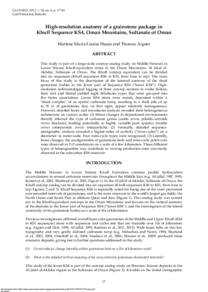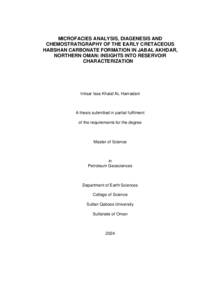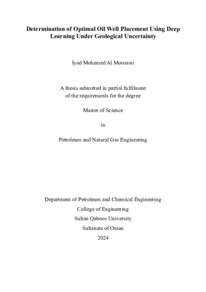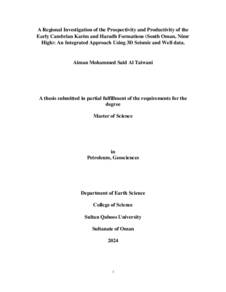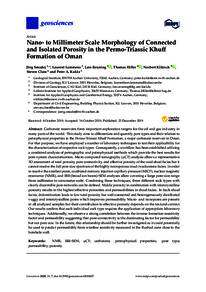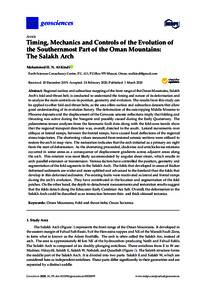Document
High-resolution anatomy of a grainstone package in Khuff sequence KS4, Oman Mountains, Sultanate of Oman.
Identifier
DOI: 10.2113/geoarabia180417
Contributors
Aigner, Thomas., Author
Publisher
Gulf Petrolink.
Gregorian
2013-10
Language
English
English abstract
This study is part of a large-scale outcrop analog study on Middle Permian to Lower Triassic Khuff-equivalent strata in the Oman Mountains, Al Jabal al- Akhdar, Sultanate of Oman. The Khuff outcrop equivalent can be divided into six sequences (Khuff sequences KS6 to KS1, from base to top). The main focus of this study is the description of the internal anatomy of the shoal grainstone bodies in the lower part of Sequence KS4 ("lower KS4"). Highresolution sedimentological logging of three outcrop sections in wadis Sahtan, Bani Awf and Mistal yielded eight lithofacies types that were grouped into five facies associations. Lower KS4 strata were mainly deposited within a "shoal complex" of an epeiric carbonate ramp, resulting in a thick pile of up to 70 m of grainstones that, on first sight, appear relatively homogeneous. However, detailed facies and microfacies analysis revealed their heterogeneous architecture on various scales: (1) Minor changes in depositional environments directly affected the type of carbonate grains (ooids versus peloids/cortoids versus bioclasts), leading potentially to highly variable pore systems (moldic versus interparticle versus intraparticle). (2) Vertically, detailed sequencestratigraphic analysis revealed a higher-order of cyclicity ("mini-cycles") on a decimeter- to meter-scale. Four mini-cycle types were recognized. (3) Laterally, facies changes, the amalgamation of grainstone beds and mini-cycle pinch-outs were observed in 2-D correlations on a scale of a few kilometers. These different types of heterogeneities may contribute to varying production rates commonly observed in the subsurface KS4 reservoir.
Member of
ISSN
1025-6059
Resource URL
Category
Journal articles

